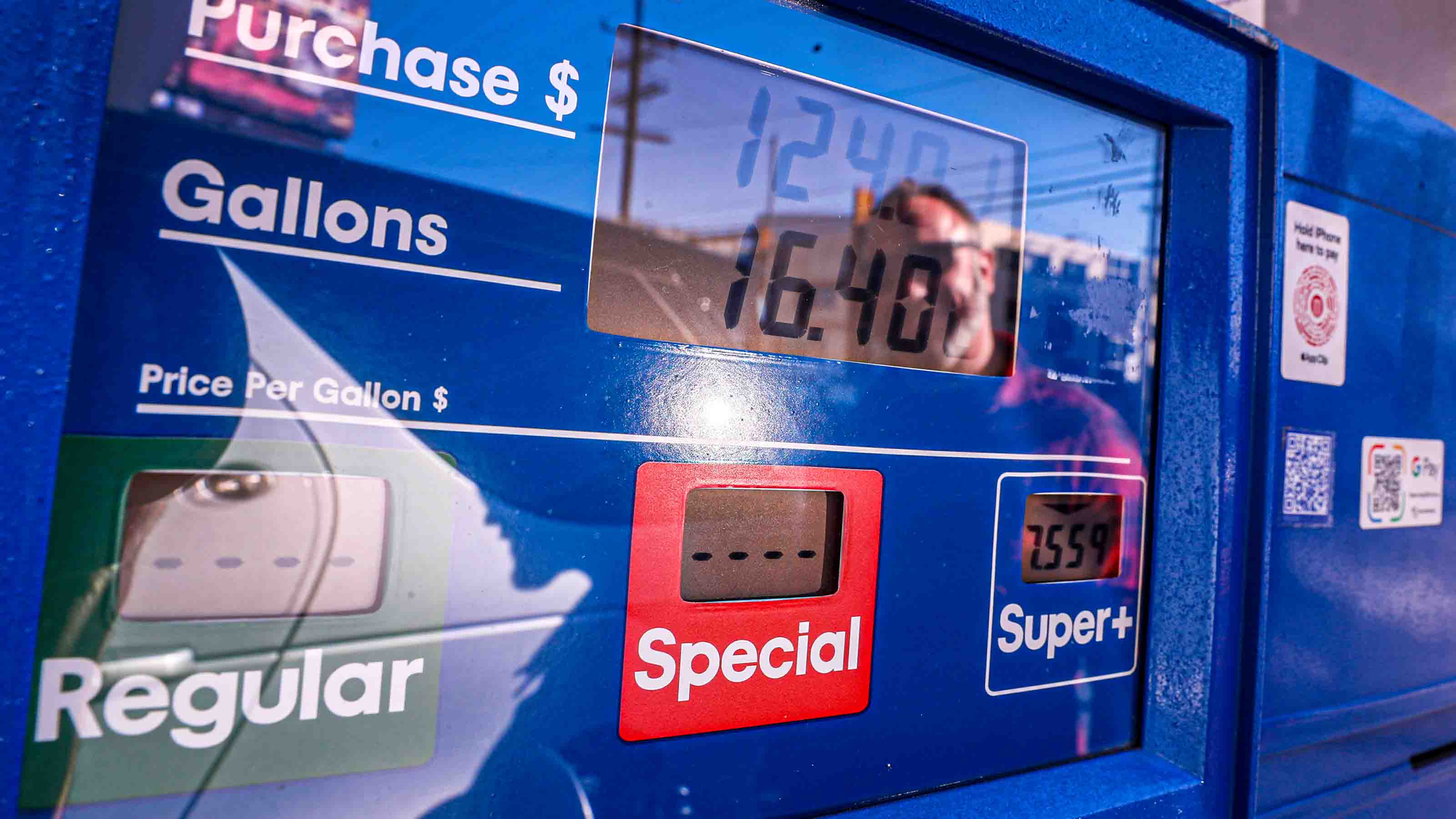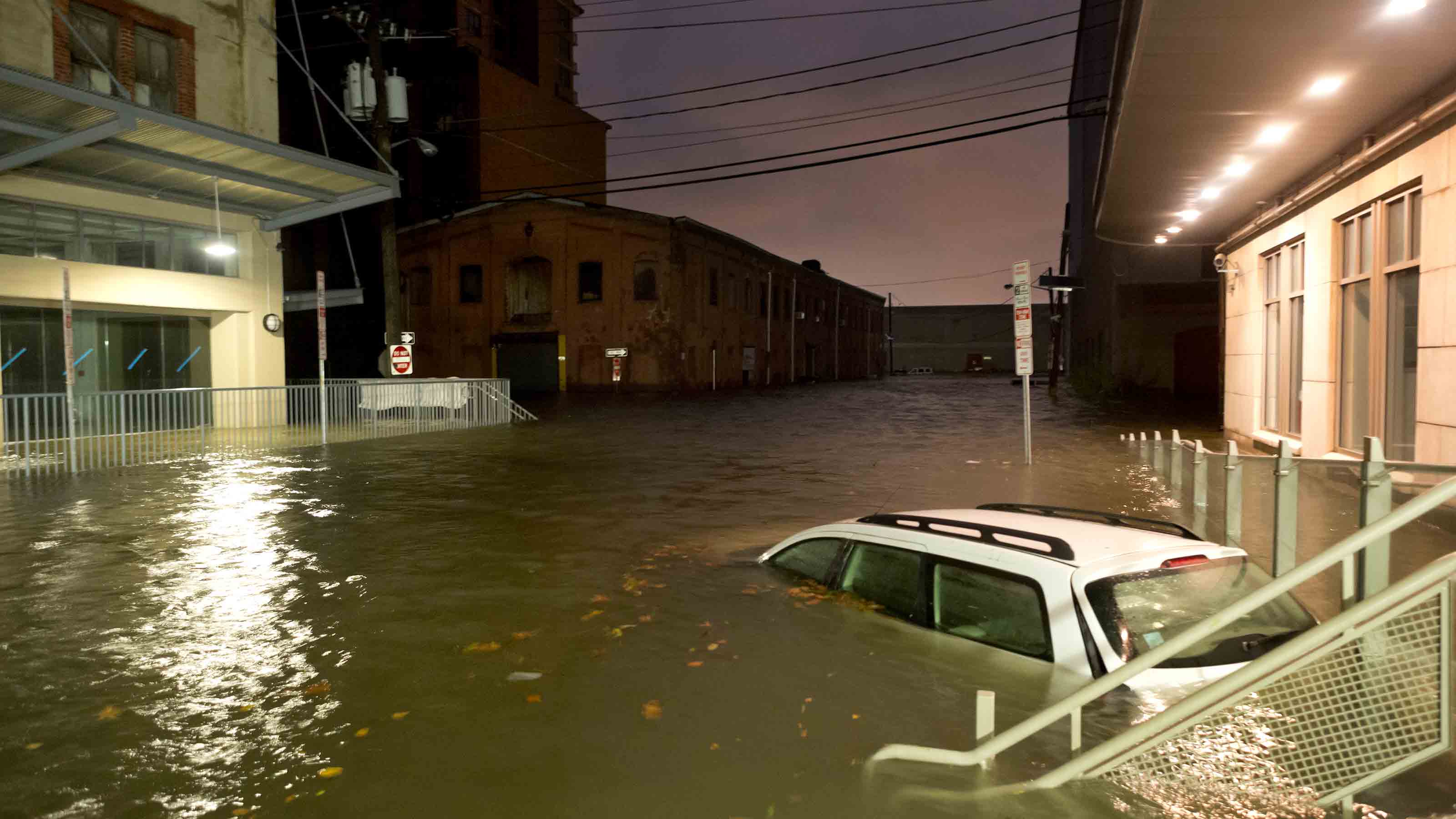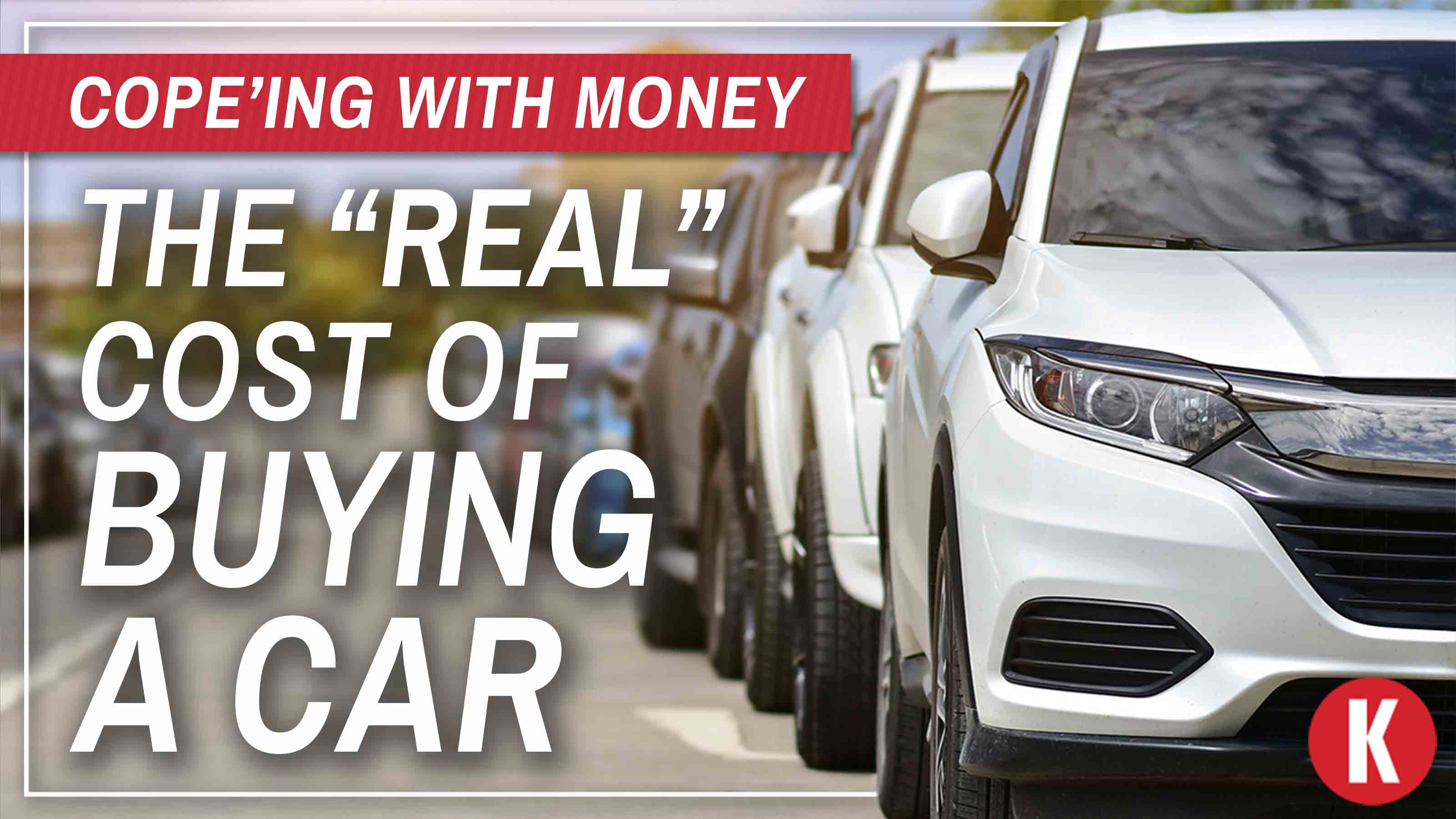Why Winter Tires Trump All-Wheel Drive
Really want to get there safely when it’s slippery out? Get more grip with dedicated winter tires.

The next time you’re driving in the snow (or you’re visiting somewhere it snows), have a look at the vehicles you see in the ditch: Odds are a lot of them have all-wheel drive. What’s behind this perverse outcome for people who expected their car to get them where they wanted to go in sloppy conditions? It’s probably their tires.
No doubt, all-wheel drive helps you accelerate more quickly when traction is scarce. “But really, you should be considering your ability to stop and corner in snow,” says Gene Petersen, who oversees tire testing for Consumer Reports. And all-wheel drive does nothing to help with that. Yes, antilock brakes and stability control (standard in all cars since 2012) can be useful at keeping you on the road, but only up to a point.
“A lot of people think these devices manufacture traction,” says Woody Rogers, a product specialist at online vendor Tire Rack. “But they just make the most of the traction that you have.”

Sign up for Kiplinger’s Free E-Newsletters
Profit and prosper with the best of expert advice on investing, taxes, retirement, personal finance and more - straight to your e-mail.
Profit and prosper with the best of expert advice - straight to your e-mail.
The solution—whether your car is all-, rear- or front-wheel drive—is to get more traction with dedicated winter tires. That’s right, an entirely different set of tires (ideally mounted on their own wheels) for use only in the cold season. Winter tires boast special rubber compounds that are more flexible in cold weather (to help grip ice) and have more edges in their treads that help the tire both cut into and stick to snow.
An analogy for the skeptical: You wouldn’t hesitate to put on different shoes when it’s slippery out, right? So don’t expect the all-season wear-forevers your car came with to do a good job in the snow. Yes, you can (and should) slow down when the white stuff is out, but ah, that’s when all-wheel drive can tempt you to keep your foot in it. Watch me zoom up this hill, just like in the car ads!
Slip sliding. To make the case more directly, Tire Rack recently set up a demonstration on the ice rink at Notre Dame University in South Bend, Ind. On the same ice where the Fighting Irish hockey team faces off in the Big 10 conference, a clutch of automotive journalists got to test two identical, all-wheel-drive Toyota RAV4s—one with the all-season tires that come standard, another with a set of winter tires. When the countdown light turned green, we drag-raced them down the ice for a whopping 60 feet, then slammed on the brakes.
Because they were timing us, we got competitive (of course). But the numbers we put up were just for lunchtime boasting. The collective data showed that the Toyota with winter tires accelerated somewhat better than the one with all-seasons, but when stopping, the benefits were far more remarkable.
Back on the ice, but with Tire Rack’s test drivers behind the wheel, we took laps around a small course defined by cones, first at 9 miles per hour, and then again at 11. At 9 mph, both vehicles did fine. At 11 mph (that’s 22% faster), the RAV4 with all-season tires plowed right through the cones and off the imaginary road. The stability control didn’t stand a chance, and there was nothing our pro at the wheel could do. If that cone line had been oncoming traffic or a guardrail, well, it would have been a bad scene for sure.
Making the decision. Do you really need winter tires? Tire Rack has a U.S. map reflecting snowfall frequency that can help answer that question. The decision also hinges on how confident you are in your winter driving ability and whether you have a job that requires you to get somewhere no matter what the weather is.
If winter traction matters to you, consider passing up all-wheel drive and buying a set of winter tires instead.
Prices for winter tires vary widely by the car you have and the wheels you choose, but a set of winter tires and wheels could easily cost $1,000. Remember that when your winter tires are on, you’re not using what are now your, um, fair-weather tires. You won’t have to replace them as quickly.
If you’re in the market for a new vehicle and winter traction matters to you, another way to approach it is to consider passing up all-wheel drive and buying a set of winter tires instead. For example, you’ll pay a $1,400 premium for all-wheel drive on the 2019 Mazda CX-5. A set of Bridgestone Blizzaks on steel wheels for the CX-5 are $1,143 at Tire Rack, ready to go and mount up (including new tire pressure monitor sensors). What’s more, the all-wheel-drive CX-5 will return roughly 3% worse gas mileage, all the time. The additional drivetrain bits for all-wheel drive add weight and possibly drag—plus (if you’re owning this car for the long haul) an additional mechanical system that needs maintenance or repair.
Winter tires generally don’t wear as long as all-weather tires, says CR’s Petersen. “Wet and dry stopping distances aren’t as good. And in some cases, the handling is not as good.” Which is why they need to come off in the spring.
If those shortcomings give you pause—especially if you have a particularly sporty ride—there’s a subcategory just for you: winter performance tires. These trade a bit of winter grip for better dry handling and higher speed ratings.
Ready to go shopping?
Standards set by an independent rating regime (established by the Rubber Manufacturers Association) determine whether a tire earns an M+S (mud and snow) rating, as most “all-season” tires do, or the more-demanding three-peak snowflake symbol (3PMSF). The three-peak snowflake symbol carries more weight and may be familiar to drivers in states that have winter driving restrictions (frequently on highways at altitude). To get the rating, a tested tire must have 10% better acceleration on snow than a reference tire.
But 3PMSF doesn’t test braking or cornering on snow, and it doesn’t test results on ice. Truly good performance in winter conditions comes only from a dedicated winter tire.
So, what’s that? Tire vendors such as Tire Rack, Discount Tire Direct and Costco.com (to name some of the online biggies) clearly segregate winter tires, and the manufacturers also guide you with obvious branding, such as “Blizzak” (Bridgestone), “Arctic” (General) or even “Winter” (Goodyear, Michelin, Pirelli). You’ll get the picture.
You’ll pay less than $400 for a set of the least costly snow tires, for small vehicles, to more than $1,000 if you’re equipping, say, a Porsche Cayenne luxury SUV.
Another question: Are you going to mount the tires on your existing wheels, or will you buy tires and wheels together? If you stick with your own wheels, you don’t have to buy four new ones (anywhere from about $350 to thousands), but you’ll need to pay between $60 and $150 twice a year, every year, to mount the winter tires on your rims and put your summer tires back on again.
Your choice could affect where you buy your tires. Online vendors such as Tire Rack, Discount Tire Direct and 1010tire let you choose from a huge inventory of both tires and wheels that they will mount and balance and then ship to you (or the installer of your choice). Note that you’ll likely also be on the hook for new tire-pressure sensors, at $200 to $300 for four.
Costco.com stocks winter tires but not wheels. You can try your local independent or chain shop, too, but its familiarity with winter rubber will likely depend on whether you’re in the snow belt. Town Fair Tire, a New England chain, offers both winter tires and tire-wheel packages.
Get Kiplinger Today newsletter — free
Profit and prosper with the best of Kiplinger's advice on investing, taxes, retirement, personal finance and much more. Delivered daily. Enter your email in the box and click Sign Me Up.

In his former role as Senior Online Editor, David edited and wrote a wide range of content for Kiplinger.com. With more than 20 years of experience with Kiplinger, David worked on numerous Kiplinger publications, including The Kiplinger Letter and Kiplinger’s Personal Finance magazine. He co-hosted Your Money's Worth, Kiplinger's podcast and helped develop the Economic Forecasts feature.
-
 How Baby Boomers and Gen Xers Are Redefining Retirement Living
How Baby Boomers and Gen Xers Are Redefining Retirement LivingBoth generations need to embrace change and leverage real estate as a dynamic asset in their retirement planning. Here's how financial advisers can help, too.
By David Conti, CPRC Published
-
 How Good Advisers Manage Risk in Challenging Markets
How Good Advisers Manage Risk in Challenging MarketsThey understand the difference between what might be real challenges to an investor's strategy and fear brought on by market volatility.
By Ryan L. Kirk, CFA® Published
-
 Gas-Saving Tips That Actually Work
Gas-Saving Tips That Actually WorkThese are gas-saving tips that will actually work for you and your car this year.
By David Muhlbaum Last updated
-
 Want to Lease an EV? The Tax Credit 'Loophole' for That Could Go Away Soon
Want to Lease an EV? The Tax Credit 'Loophole' for That Could Go Away SoonTax Credits If you are deciding whether to lease or buy a car, here's what you need to know about the EV lease tax credit.
By Kelley R. Taylor Last updated
-
 Car Buying in a Topsy-Turvy Market
Car Buying in a Topsy-Turvy MarketYou need a new car? Good luck with that! What should you do? We've got some answers.
By Katherine Reynolds Lewis Last updated
-
 Watch Out for Flood-Damaged Cars from Hurricane Ian
Watch Out for Flood-Damaged Cars from Hurricane IanBuying & Leasing a Car In the wake of Hurricane Ian, more flood-damaged cars may hit the market. Car prices may rise further because of increased demand as well.
By Bob Niedt Last updated
-
 Car Buyers: The 3-Day Grace Period Is Just a Myth!
Car Buyers: The 3-Day Grace Period Is Just a Myth!Buying & Leasing a Car Many car buyers think they have three days after making a purchase to return a car. Here’s where they’re going wrong, and what they should do instead to get a decent used car.
By H. Dennis Beaver, Esq. Published
-
 PODCAST: Car-Buying in an Inflated Market with Jenni Newman
PODCAST: Car-Buying in an Inflated Market with Jenni NewmanBuying & Leasing a Car With cars both scarce and expensive these days, what to do if you want – or need – a new ride? Car-buying strategist Jenni Newman of Cars.com shares some tips. Also, more on the magical 9% savings bond.
By David Muhlbaum Published
-
 The "Real" Cost of Buying a Car
The "Real" Cost of Buying a CarFeature Atlanta Falcons linebacker and Kiplinger contributing editor Brandon Copeland illustrates how car prices are far more than meets the eye.
By Brandon Copeland Published
-
 How to Get a Car Deal in This Market
How to Get a Car Deal in This MarketBuying & Leasing a Car Low inventories mean it’s hard to haggle on price, but you can still negotiate on financing when shopping for a new or used car.
By Rivan V. Stinson Published